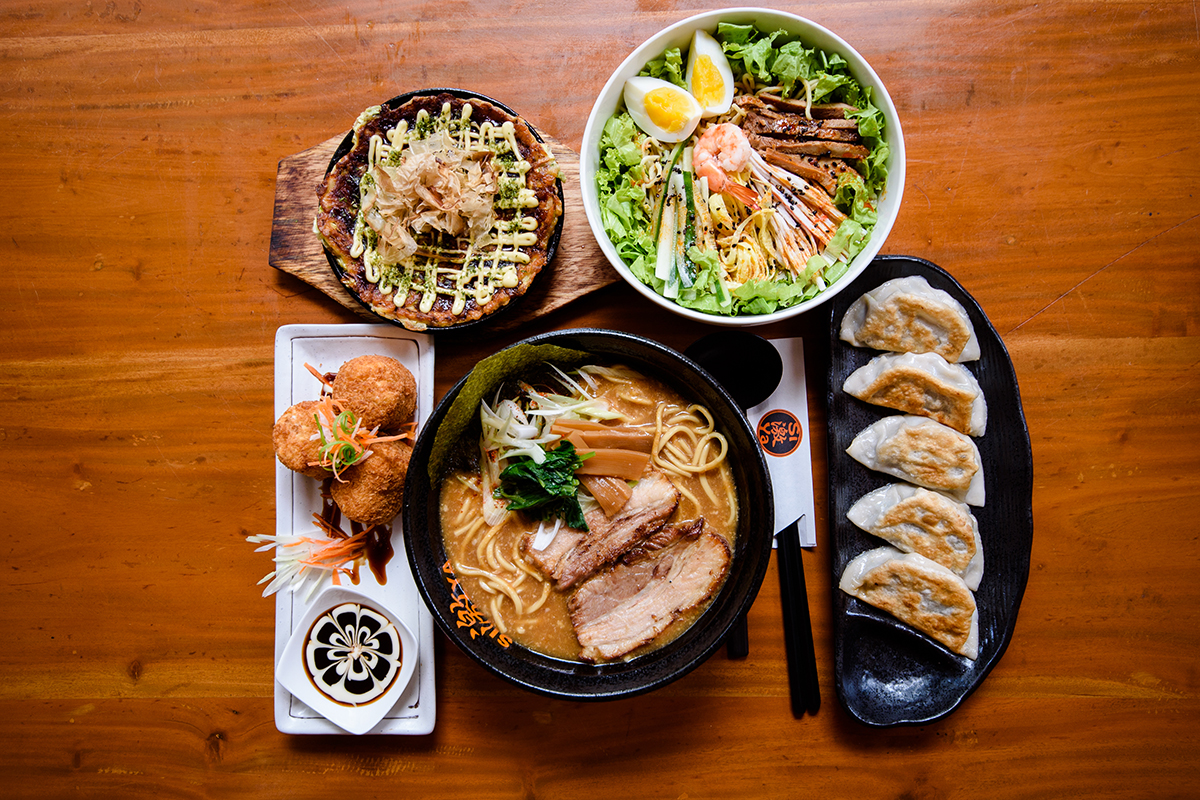
In Hiroshima, the city that the world remembers for mankind’s greatest tragedy, one surprise discovery is that of a thriving nightlife. It’s as if as the horrors of the past have been wiped away though not forgotten and in their place a sense of life thriving and being lived to its fullest has been carefully planted. Bars have a lot to do with this sense of energy in contemporary Hiroshima. Enter any of the izakayas and apart from sake, shochu and Japanese whisky, what you will almost invariably find are teppans.
Teppanyaki-cooking on hot iron plates, somewhat like our own tawas-is a well-known Japanese technique of cooking small bits of meats, vegetables and starches (including rice) in front of the patrons. The result of this sort of a grilling is food that is light, fresh and delicious. Apt for bars. And so in Hiroshima, as also in many parts of the world where Japanese cuisine is so popular, it is common to find izakayas offering teppanyaki. You begin with beer, the teppan is brought out, guests move their own food around on the small iron plates, and sip more alcohol as it cooks. You get the drift…
However, teppanyaki can be elevated to more serious dining too. High end and fashionable restaurants are known to build huge teppans and place bar style seating around these to encourage diners to partake of a meal experience that is at once spectacular and interactive. Like a flair bartender whose services may be highly sought not merely for his mixology skills but people’s skills, chefs who juggle with knives, spoons and eggs, all the while entertaining guests seated around the food cooking on the hot iron tables can be in big demand. As far as community dining goes this is a unique experience, where the accent is equally on the food as well as entertainment-you chat with the chef and fellow guests seated around the teppan.
While traditionally, teppans were used only for cooking at high temperatures, newer experimental restaurants in Japan are now using this same idea of showmanship around the plates to set up teppanyaki dessert bars, that serve only desserts, all assembled- ice cold-on the teppan even as guests seated around it take in the spectacle. That is one dining trend you can expect to see more of next year perhaps.
Most people new to Japanese food and the many kinds of techniques for grilling, roasting, frying, broiling and cooking it employs get confused between teppanyaki and robatayaki. Both can be used as interactive ways of cooking food where the guests can grill their own choice of meats, veggies and carbs with light seasoning at their tables. Robata grills however are obviously different from teppans and use convection as a method of heating things up, while teppans use conduction and food comes directly in contact with metal.
The closest Indian way of cooking I can think of is tak-a-tak that many of us enjoy at weddings and parties in north India. Did the tak-a-tak creep into our collective imaginations thanks to teppanyaki? Though tawa cooking is widely used in India to bake breads and make kebabs, grilling vegetables on a hot plate with the associated connotations of live cooking is eerily similar to teppanyaki. Tak-a-tak is also a restaurant creation, relatively new in the history of Indian cuisines. For all we know, hotel and restaurant caterers created this as a novelty feature for big fat weddings, borrowing the idea from teppanyaki already famous the world over. As you dig into masala coated tomatoes and peppers this shaadi season, spare a thought for the original teppanyaki too, where the seasoning is always more pristine but the food is as delicious.
[“source=food.ndtv”]










